
Things to Do in Oman: A Local’s Guide to Hidden Gems
Picture yourself in a mosque with the world’s largest Persian carpet that welcomes 20,000 worshippers at once. This remarkable sight represents just one of many experiences waiting in Oman, which stands as one of the Middle East’s safest destinations.
Dubai and Abu Dhabi might draw the crowds, but Oman delivers an authentic Arabian experience. The country captivates visitors with its pristine beaches, dramatic wadis, and historical sites. The turquoise waters of the Bimmah Sinkhole and the ancient Nizwa Fort showcase the country’s incredible diversity. The Tayq Sinkhole amazes visitors as it plunges 820 feet deep, making it one of the world’s largest sinkholes.
Let me share my local knowledge about Oman’s hidden treasures. You’ll learn about secret spots that most tourists miss, authentic food experiences, and cultural encounters beyond the usual tourist attractions.
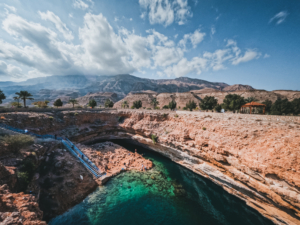
Understanding Oman’s Hidden Culture
The warmth of an Omani home starts with one of the country’s most treasured customs – traditional hospitality. You’ll receive kahwa (Omani coffee) and dates as soon as you walk in, a centuries-old tradition that represents generosity and friendship. The majlis, which means ‘a place of sitting’ in Arabic, acts as the center of Omani hospitality where hosts treat guests with deep respect and include them in meaningful conversations.
Oman’s festivals provide unique experiences throughout the year. The Muscat Festival lights up the city with dazzling fireworks and laser shows that bring Omani traditions to life. The Khareef Festival in Salalah runs from mid-July to late August and reshapes the scene with cooling monsoon rains. Visitors can enjoy:
- Traditional plays and folkloric shows
- Concerts by prominent Arab performers
- Heritage village exhibitions
- Omani poetry forums
Omani villages offer a genuine glimpse of traditions that have endured time. The ancient falaj systems are the foundations of village life and agriculture. These vital irrigation channels showcase Omanis’ remarkable engineering abilities that combine navigation, mathematics, and engineering principles. Visitors should dress modestly and respect local customs, especially when they walk through communities or meet residents.
Village life moves to the rhythm of traditional practices. To name just one example, see Al Hamra, where visitors can watch traditional bread preparation, coffee roasting, and oil pressing at Bait al Safah, a living history museum. Omani society keeps its tribal roots, though this influence gradually changes. People gather around mealtimes to share traditional Omani dishes that highlight each region’s rich culinary heritage.
Oman’s cultural identity is different from its neighbors. Women have more freedom here than in other parts of the Arabian Peninsula, though social interactions mostly stay separated by gender. The sort of thing I love about learning Omani culture is how traditional values blend with modern sensibilities.
Secret Spots Only Locals Know
Oman has some extraordinary places that tourists rarely visit. These hidden spots are perfect for adventurous travelers who want to experience the country’s authentic side.
Hidden beaches and coves
Qantab Beach is a perfect getaway for anyone seeking peace and quiet. You can hop on a boat with local fishermen to reach secluded coves that you can’t access by land. The beautiful White Beach near Fins village has turquoise waters that meet sand created from ancient coral reefs. Ras Madrakah Beach gives you a unique coastal experience with its misty atmosphere and cool temperatures thanks to monsoon clouds.
These hidden coastal treasures include:
- Al Lakbi Beach’s natural rock pools where various bird species make their home
- Yanket Beach’s football pitch that disappears under the tides
- Tiwi Beach’s pristine white sand that’s perfect for watching the sunrise
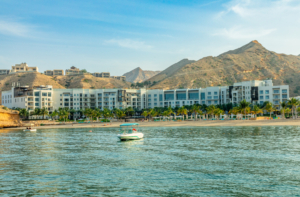
Lesser-known mountain trails
The Al Hajar mountain range holds secrets that make it one of Oman’s most fascinating places. The Jabal Stairway Trail, east of Jabal Shams, features over a hundred steps carved right into the rock. Jebel Kawr is a peaceful alternative to busy hiking spots, with amazing valley views.
The Balcony Walk is a moderate 4-hour trek along canyon edges that shows off some of Oman’s most stunning views. Deep in the Western Hajar mountains, you’ll find abandoned villages that tell stories from the mid-eighties, when communities moved as the Sultan built new infrastructure.
Unexplored ancient ruins
Recent archeological surveys have found amazing sites that few people know about. Researchers found more than 50 sets of ruins spread across 10 ancient settlements in the Qumayrah valley alone, dating back 4,000 years. The oldest structures are stone towers and tombs from the early Bronze Age.
The most impressive discovery was an Iron Age settlement with narrow streets and connected houses packed close together. On top of that, archeologists found traces of ancient copper work, including stone tools used to crush ore and pieces of old smelting furnace walls. These findings help us learn about Oman’s rich history through ancient stone tools, Neolithic tombs, and rock carvings of various animals.
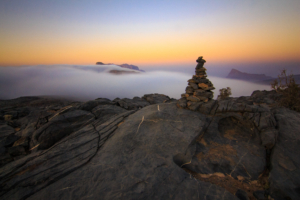
Best Times to Visit Hidden Gems
The best time to visit Oman lets you find its hidden treasures easily. The winter months from October through March are perfect to uncover secret spots. Daytime temperatures stay pleasant between 25-32°C.
Seasonal highlights by region
The northern region around Muscat and Nizwa comes alive from October through April. These months provide perfect weather to hike in the Al Hajar Mountains and visit ancient ruins. The magic happens in Jebel Akhdar during March and April as roses bloom and fill the air with their enchanting fragrance.
Salalah’s southern region moves to its own beat. The Khareef season changes this area into a natural tropical paradise from June to September. Green landscapes and seasonal waterfalls appear everywhere. Nature lovers will see the most dramatic desert-to-paradise transformation during this time as they find hidden waterfalls and secret valleys.
The Ras Al Jinz Turtle Reserve shows its magic between June and September. Sea turtles nest and hatch along the pristine coastline during these months. The Wahiba Sands are most welcoming between October and March with comfortable temperatures from 24°C to 32°C.
Local festival calendar
The cultural calendar is rich with authentic experiences year-round. The Muscat Festival runs from January to February and brings Omani heritage to life through:
- Traditional music performances
- Theater shows
- Acrobatic displays
- Local food exhibitions
- Cultural exhibitions
November lights up with nationwide celebrations as Omanis mark their National Day on November 18th. The festivities include firework displays, parades, and cultural performances. Local markets overflow with autumn’s harvest of pomegranates, grapes, olives, and walnuts.
The Salalah Tourism Festival adds cultural performances to the natural beauty of the Khareef season in July and August. July 23rd marks Renaissance Day, a most important cultural milestone that celebrates the start of Oman’s modern renaissance.
Oman’s weekends fall on Friday and Saturday, and many museums and attractions follow different schedules these days. Whatever time you choose to visit, outdoor activities are best planned outside the peak heat hours of 12 PM to 3 PM.
Local Food Experiences
Tasting authentic Omani cuisine ranks among the most rewarding experiences in Oman. The country’s culinary heritage shows its rich trading empire history that blends Arab, Pakistani, Iranian, Indian, Asian, Eastern Mediterranean, and African influences.
Home-cooked Omani meals
Local certified families welcome visitors to their homes for intimate dining experiences. These authentic meals feature dishes that burst with flavor, from spicy lentil fritters to slow-cooked lamb. Omani hosts take pride in their generous hospitality and serve plenty of food to delight their guests.
Omani cuisine’s foundation rests on its staple ingredients. Dried limes, called loomi, bring distinctive citrus notes to slow-cooked dishes. Dates are a vital part of daily meals and celebrations. Most Omani dishes blend rich mixtures of spices, herbs, and marinades, yet they taste milder than other Arabian cuisines.
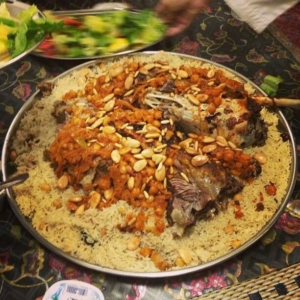
Traditional coffee ceremonies
The Omani coffee ceremony stands out as one of the most fascinating sights in Oman. The ritual follows specific customs:
- Coffee must be served with the right hand only
- Cups should be filled only quarter-full to show respect
- Guests signal they’re finished by shaking their cups slightly
- Cracked cups are never used, even with tiny damage
The coffee, called Kahwa, combines cardamom, sometimes saffron, and coffee beans cooked for about 10 minutes. In spite of that, locals say it tastes best when prepared over wood fire during desert camping trips.
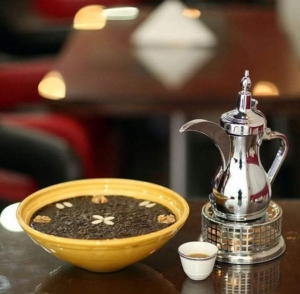
Secret food markets
The Mutrah Souq holds hidden culinary treasures where locals shop away from tourist spots. This market displays an array of spices, textiles, and local delicacies. Visitors can explore aisles filled with aromatic spices, traditional sweets, and fresh produce.
The Mutrah Fish Market gives visitors a genuine experience to connect with friendly local vendors. Many people buy fresh fish, have it cleaned on-site, and take it to nearby restaurants to cook according to their taste.
Tips for Authentic Local Travel
You’ll need to understand local customs and practical tips to make the most of your experience in this fascinating country. Let me share what I’ve learned about discovering the authentic side of Oman.
Transportation hacks
Moving around Oman comes with its unique challenges and opportunities. The Otaxi or Tasleem Taxi app are a great way to get fair pricing and reliable service.
Budget travelers should check out the Mwasalat bus service. The company manages to keep their busses clean and comfortable with air-conditioning and WiFi. Local “collectivos” (shared taxis) are budget-friendly too. Workers mostly use them, and the prices stay fair.
Communication essentials
English is common in cities and tourist spots, but knowing simple Arabic phrases will boost your experience. These essential phrases will help you connect:
- “As salam alaykum” (peace be upon you) – standard greeting
- “Walaykum as salam” – reply to the greeting
- “Sabah al khayr” – good morning
- “Misa al khayr” – good evening
- “Shukran” – thank you
Conversations in Oman have their patterns. People love to ask about your country, age, marital status, and what you think about Oman. Being ready for such talks helps create meaningful connections.
Cultural etiquette guide
Omani social norms can really enrich your travel experience. The country’s deep-rooted traditions deserve respect from visitors. Greetings vary – men might shake hands, but different gender interactions need more care. Let the other person take the lead.
Dress codes matter here. Women should wear loose clothes that cover their arms and shoulders. Their skirts should reach below the knee. Men need trousers instead of shorts, especially in rural areas. Taking off your shoes before entering someone’s home shows good manners.
Public behavior needs careful attention. Never show anger or raise your voice. Simple hand gestures could cause legal trouble. Photography has its rules too – ask permission before taking pictures, especially of women in traditional dress.
Social settings have their own customs. Accept qahwa (Omani coffee) and dates when offered – it shows mutual respect. The coffee ceremony follows special rules. Cups should be quarter-full and served with your right hand only.
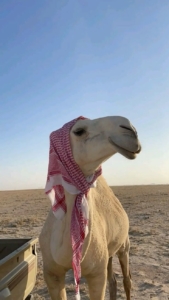
Conclusion
Oman is different from its flashier neighbors. This remarkable country offers authentic Arabian experiences that stay with you forever. My journey through Oman taught me that its real magic exists away from tourist hotspots. You’ll find secret beaches, hidden mountain trails and ancient ruins with stories waiting to be told.
The best way to experience Oman is to slow down. Spend time with locals, enjoy traditional meals and respect their age-old customs. Winter brings perfect weather to explore the country. Each season has something special to offer – from sea turtles nesting in summer to Salalah’s beautiful transformation during khareef season.
The country’s pristine landscapes blend perfectly with its rich traditions and warm hospitality. This makes Oman truly special. When you understand the local culture and customs, you’ll find a country that rewards curious travelers with experiences unlike anything else in the Middle East. Start your adventure and Book Now!
